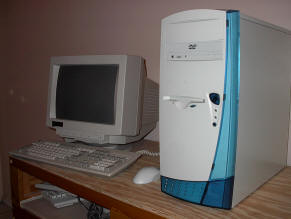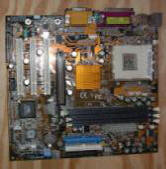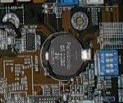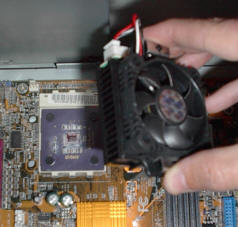| The Beginning |
|

Computers come in a variety of shapes, sizes, and designs
but all operate the same way. In this section, I'll show you
the parts that make up a computer and give you a general
idea of what they do.
A PC consists of 4 standard parts: the computer chassis (the
box), the monitor (viewing screen), the keyboard, and the
mouse. Simple so far, right? But you would be surprised to
know how many people think the monitor IS the computer and
the box is simply the part that provides power or helps them
get online.
Note: Some computers such as the IBM Vista or Apple iMac
combine the box and screen into one piece. Of course a
laptop consists of, well, just the laptop. The computer
chassis (the box) being the part that sits on your desk (or
lap) and the monitor (viewing screen) being the part on the
top that opens and stands vertically.
*Couch Potato Computer Analogy: Think of the box (the
part that holds all of the components) as your cable TV box
and the monitor (the visual aid that lets you see what's
going on) as your TV. Along that same line, your keyboard
and mouse would be your interactive/input tools much like
your cable TV remote.
PARTS and PIECES
As I mentioned above, the computer chassis is the shell that
holds all the components that make your computer work. It
comes in different shapes, sizes and designs. It's an
aesthetically pleasing housing for all the cables, wires,
and chips that make up the computer. Now we'll take a look
at a few parts inside the computer chassis and tell you what
they do.
Note: I'm using an older computer for this
demonstration. While the types of parts used in a
computer are generally the same in every computer, there are
different versions of those types depending on the kind of
computer and the age. (ie... Memory modules have gone
from small, 3 inch sticks with 16MB memory to 5 inch sticks
with GB memory today. All the same type of part but a
difference in technology.)


There is a small battery on the motherboard used to keep
time and the information stored in the system BIOS (which
I'll explain later) when your computer is off.
Note: if you ever notice the clock on your computer
is losing time or if the time and date seem to start over
when you turn the computer on, your battery may need to be
changed.

The CPU does all the calculating and processing that makes
the computer operate. It is a square ceramic part that
fits into that white block in the motherboard picture above.
It locks into place and a heat sink and fan are locked in on
top of it in order to draw the heat away from the CPU.
Note: If the fan stops working, your CPU will
likely burn up.
ROM (Read Only Memory)
This computer chip is permanently attached to the
motherboard and contains the BIOS (Basic Input/Output
System). The BIOS contains information and settings,
as well as, instructions the computer carries out when
starting up. This includes where to look for the boot
device. In this case, the boot device is the
computer's hard drive.
![]()
The Beginning
Wizard of OS
Plug n Play
Internet & Networking
Care & Maintenance
Tips, Tricks & Tidbits
Troubleshooting
Tools & Info
Albums
Blog
Disaster101
Dugout
PC101
RambleCamp
Tip Jar
Contact
About
